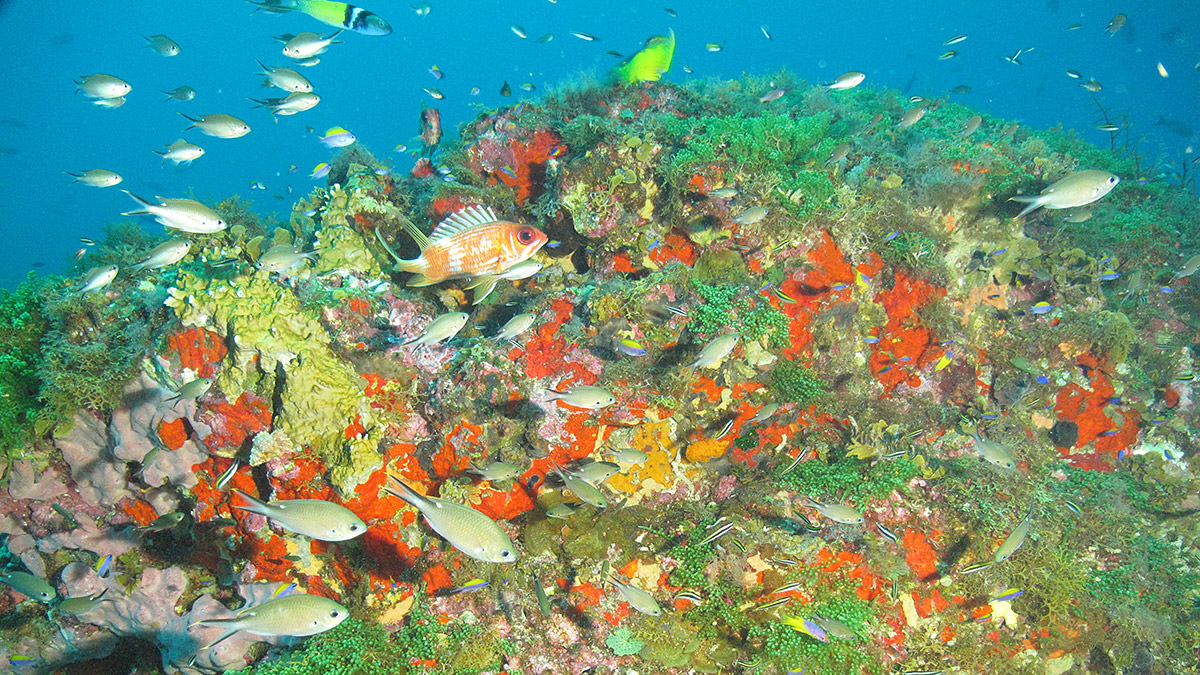FOR IMMEDIATE RELEASE
June 07, 2016
Contacts:
Kelly Drinnen, 409-621-5151 ext. 105
Vernon Smith, 240-533-0662
NOAA announces proposals to expand Flower Garden Banks National Marine Sanctuary

Building on more than 30 years of scientific studies, including numerous reports released in the last decade and in the aftermath of the 2010 Deepwater Horizon oil spill disaster, NOAA today announced a proposal to expand Flower Garden Banks National Marine Sanctuary to protect additional critical Gulf of Mexico habitat.
The plan lays out five expansion scenarios, ranging from no expansion of the 56-square-mile sanctuary, to one bringing it to a total of 935 square miles. In NOAA’s preferred scenario, the sanctuary would expand to 383 square miles to include 15 reefs and banks that provide habitat for recreationally and commercially important fish, as well as a home to 15 threatened or endangered species of whales, sea turtles, and corals.
"These habitats are the engines of sustainability for much of the Gulf of Mexico and are critical to fish such as red snapper, mackerel, grouper and wahoo, as well as other protected species," said John Armor, acting director, NOAA’s Office of National Marine Sanctuaries. "The proposed expansion also advances NOAA's mission to conserve and manage coastal and marine ecosystems and resources that help sustain local communities and America's economy."
The public is invited to comment on the agency’s proposal through August 19. Those comments will be used to develop a final environmental impact statement, which will then be available for public review. After reviewing the comments from the public, NOAA would then make a decision on the proposed expansion.
A description of the expansion scenarios, including boundaries and resources the areas contain, can be found at http://flowergarden.noaa.gov/management/expansiondeis.html.
Located 115 miles off the coasts of Texas and Louisiana, NOAA designated the East and West Flower Garden Banks as Flower Garden Banks National Marine Sanctuary in 1992. In 1996, Stetson Bank, located 70 miles off the Texas coast, was added to the sanctuary through Congressional action. The three banks, encompassing 56 square miles, include the northernmost coral reefs in the continental United States, deep-water reef communities and other essential habitats for a variety of marine species.
Expansion of the sanctuary emerged as one of the top priority issues during a review of the sanctuary’s management plan in 2012. The Deepwater Horizon oil rig explosion, which resulted in the largest marine oil spill in U.S. history, also accelerated interest in expansion, with government scientists and non-governmental organizations urging additional protections for marine life and essential Gulf habitat.
Five meetings are planned for the public to learn more about the proposal and submit comments. Meetings are scheduled for:
Galveston, Texas:
Tue., July 12, 5:30-7:30 p.m.
Flower Garden Banks National Marine Sanctuary Office
4700 Avenue U, Building 216
Galveston, TX 77551
Houston, Texas:
Wed., July 13, 5:30-7:30 p.m.
Trini Mendenhall Community Center
1414 Wirt Rd.
Houston, TX 77055
New Orleans, Louisiana:
Tue., July 19, 5:30-7:30 p.m.
Hilton New Orleans Airport
Segnette Room
901 Airline Drive
Kenner, LA 70062
Mobile, Alabama:
Wed., July 20, 5:30-7:30 p.m.
Five Rivers Delta Center
30945 Five Rivers Blvd.
Spanish Fort, AL 36527
Lafayette, Louisiana:
Thu., July 21, 5:30-7:30 p.m.
Estuarine Habitats and Coastal Fisheries Center
646 Cajundome Blvd.
Lafayette, LA 70506
Comments on the proposal may also be submitted by any of the following methods:
- Federal eRulemaking Portal: http://www.regulations.gov. In the search window, type NOAA-NOS-2016-0059, click the "Comment Now!" icon and complete the required fields.
- Mail: George P. Schmahl, Sanctuary Superintendent; Flower Garden Banks National Sanctuary, 4700 Avenue U, Bldg 216; Galveston, Texas 77551
NOAA's mission is to understand and predict changes in the Earth's environment, from the depths of the ocean to the surface of the sun, and to conserve and manage our coastal and marine resources. Join us on Facebook, Twitter, Instagram and our other social media channels.

